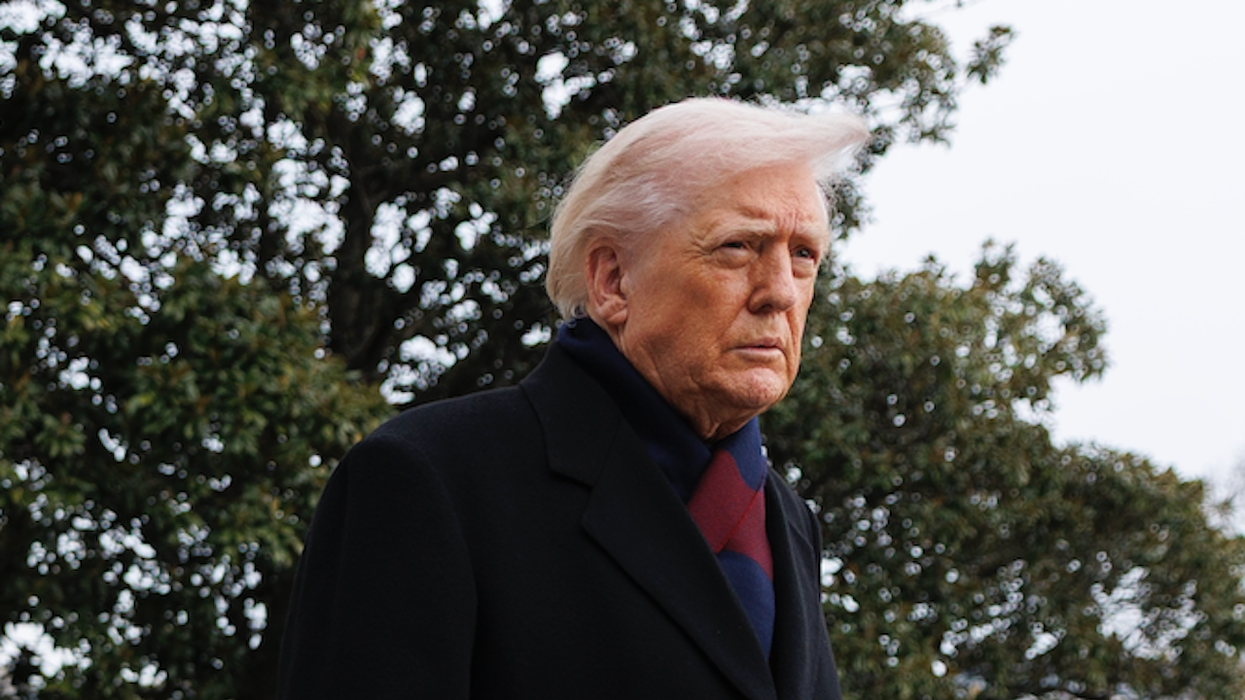
© 2025 Blaze Media LLC. All rights reserved.
Guess Who Benefited Most from Fed's 'Discount' Loan Program? Foreign Banks
April 01, 2011
“The American people are going to be outraged..."
So if I explained that the Federal Reserve has a “discount window” lending program, that works as its primary vehicle for providing cash to banks to help them avert a liquidity squeeze, who do you think benefited most from that program during the financial crisis? If you said U.S. banks, you're wrong. If you said foreign banks, ding ding ding!
According to Bloomberg News, "The biggest borrowers from the 97-year-old discount window as the program reached its crisis-era peak were foreign banks, accounting for at least 70 percent of the $110.7 billion borrowed during the week in October 2008 when use of the program surged to a record."
Now isn't that interesting. So who exactly are those foreign borrower? They include European, Chinese, and even Libyan-affiliated borrowers. Bloomberg explains:
Dexia SA (DEXB), based in Brussels and Paris, borrowed as much as $33.5 billion through its New York branch from the Fed’s “discount window” lending program, according to Fed documents released yesterday in response to a Freedom of Information Act request. Dublin-based Depfa Bank Plc, taken over in 2007 by a German real-estate lender later seized by the German government, drew $24.5 billion. [...]Bank of Scotland Plc, which had $11 billion outstanding from the discount window on Oct. 29, 2008, was a unit of Edinburgh-based HBOS Plc, which announced its takeover by London-based Lloyds TSB Group Plc in September 2008. [...]
Other foreign discount-window borrowers on Oct. 29, 2008, included Societe Generale (GLE) SA, France’s second-biggest bank; and Norinchukin Bank, which finances and provides services to Japanese agricultural, fishing and forestry cooperatives. Paris- based Societe Generale borrowed $5 billion that day, and Tokyo- based Norinchukin borrowed $6 billion. [...]
Bank of China, the country’s oldest bank, was the second- largest borrower from the Fed’s discount window during a nine- day period in August 2007 as subprime-mortgage defaults first roiled broader markets. The Chinese bank’s New York branch borrowed $198 million on Aug. 17 of that month, while two Deutsche Bank AG divisions borrowed $1 billion each, according to a document released yesterday.
Arab Banking Corp., then 29 percent-owned by the Libyan central bank, used its New York branch to borrow at least $1.1 billion from the discount window in October 2008.
Thursday night, Fox News detailed the domestic borrowers:
“The American people are going to be outraged when they understand what has been going on,” Rep. Ron Paul (R-TX), chairman of the House subcommittee that oversees the Fed, told Bloomberg TV.
“What in the world are we doing thinking we can pass out tens of billions of dollars to banks that are overseas?” he added. “We have problems here at home with people not being able to pay their mortgages, and they’re losing their homes.”
The Fed and Chairman Ben Bernanke had fought for two years to keep the information secret, saying it could lead people to think some banks are weaker than they are. But the Fed eventually had to honor a Freedom of Information Act request.
Get all the details from Bloomberg.
Want to leave a tip?
We answer to you. Help keep our content free of advertisers and big tech censorship by leaving a tip today.
Want to join the conversation?
Already a subscriber?
Jonathon M. Seidl is a former managing editor of Blaze News and a best-selling author and speaker. His next book, “Confessions of a Christian Alcoholic,” will be released on October 7, 2025.
Jonathon M. Seidl
Jonathon M. Seidl is a former managing editor of Blaze News and a best-selling author and speaker. His next book, “Confessions of a Christian Alcoholic,” will be released on October 7, 2025.
more stories
Sign up for the Blaze newsletter
By signing up, you agree to our Privacy Policy and Terms of Use, and agree to receive content that may sometimes include advertisements. You may opt out at any time.
Related Content
© 2025 Blaze Media LLC. All rights reserved.
Get the stories that matter most delivered directly to your inbox.
By signing up, you agree to our Privacy Policy and Terms of Use, and agree to receive content that may sometimes include advertisements. You may opt out at any time.






